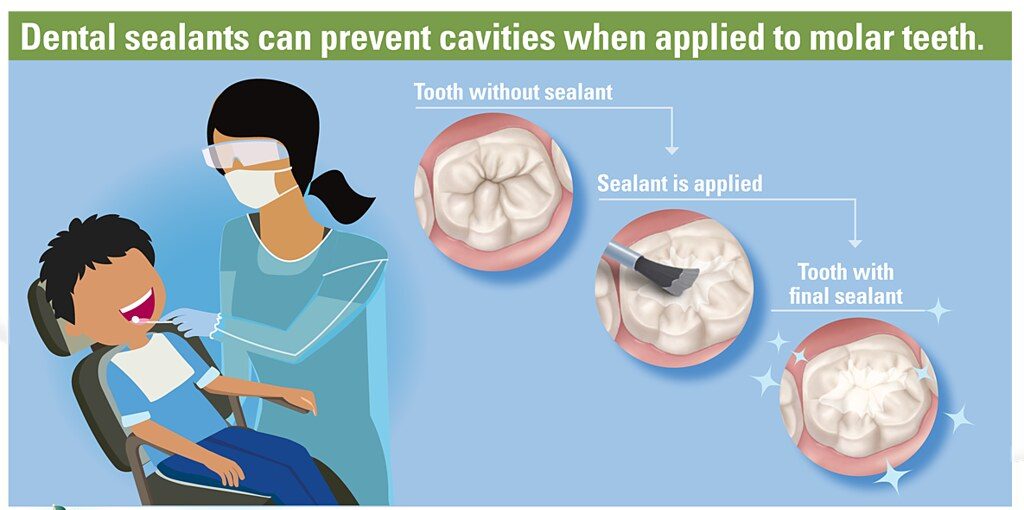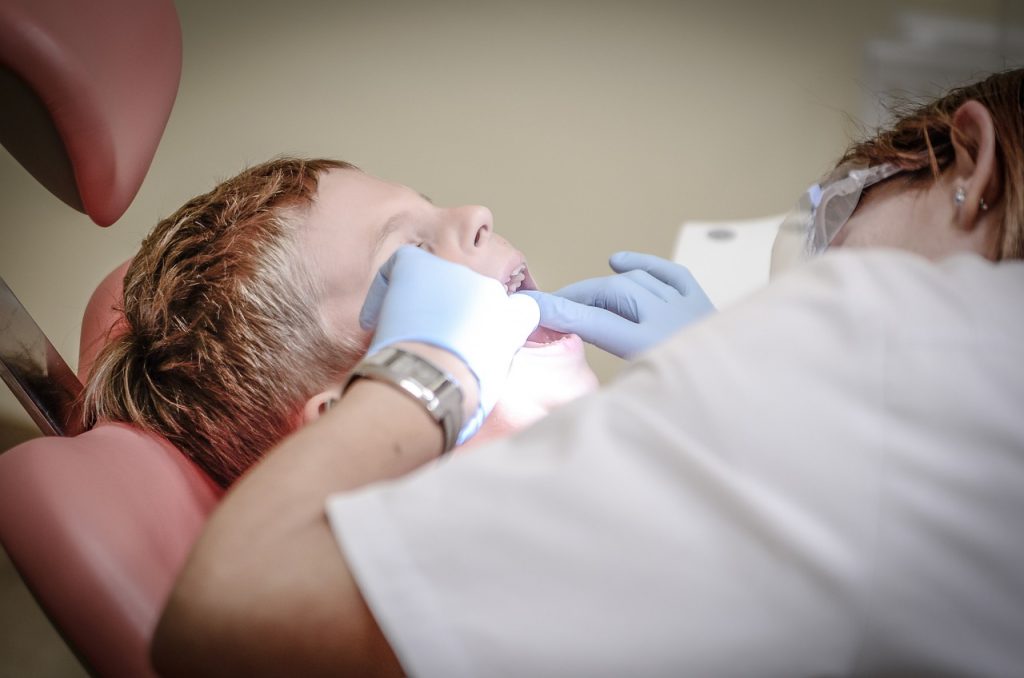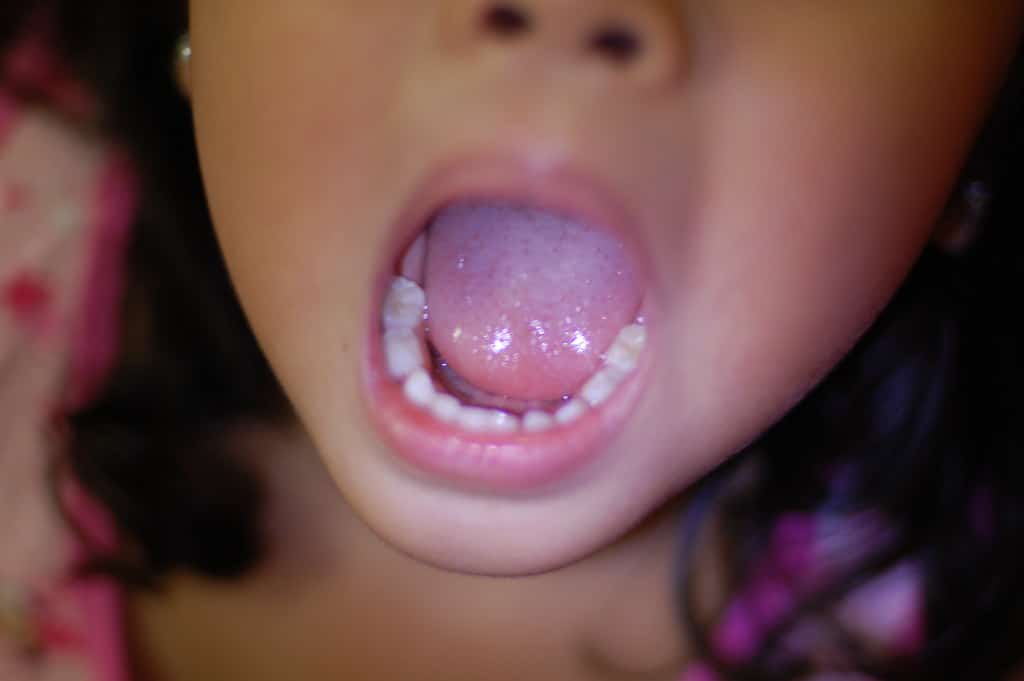What are dental sealants?
It’s often recommended for children, but adults can also benefit from them: dental sealants. This is a little protective layer, that ‘seals’ the grooves in teeth, most often molars. What are dental sealants exactly? Read our guide.
In This Article:
- What are dental sealants?
- The materials of dental sealants
- The process of applying dental sealants
- The cost of dental sealants
- How long do dental sealants last?
- Downsides and risks
What are dental sealants?
Dental sealants, also known as fissure sealants, are thin, protective coatings that cover the chewing surfaces of teeth. They are most often used on the back teeth or molars. Here, they ‘fill’ the deep grooves on the surface. This smooths the teeth over, which makes it easier to keep your teeth clean. Food and bacteria don’t get much chance.
The main purpose of sealants is to prevent tooth decay. This is caused by caries, bacteria that damage the tooth. Research on dental cavities in children showed that if 40% of back teeth develop decay over 24 months, using sealant reduces this to 6%.
Dental sealants are mostly used for children and teenagers when their adult teeth first come in. This is because new adult teeth are more likely to get cavities, especially if you take (most) kids’ diets and brushing habits into consideration. The molars are the most affected. But adults can also benefit from dental sealants, especially if they have deep grooves in their back teeth.
If you’re considering dental sealants, you’re not the only one. According to the Centers for Disease Control and Prevention (CDC), about half of children aged 6–11 years (42%) and teenagers aged 12–19 years (48%) had dental sealants on their permanent teeth. The use of sealants has increased since the early 1970s.
All in all, dental sealants protect your teeth. In that way, they’re also cost-effective. It is cheaper to place sealants than to get fillings or root canals. Plus, you keep your smile pretty and pain-free.

The materials of dental sealants
Dental sealants are made from special materials designed to protect your teeth. The main component of these sealants is usually a synthetic material. There are two main types of materials used to make dental sealants: resins and glass ionomers.
Resin
Resins can be made from plants but are often made from a type of plastic. The most common type of resin used in dental sealants is called bisphenol-A-glycidyl methacrylate (Bis-GMA) or a similar compound. There are two types of resin-based sealants: filled and unfilled. Filled sealants are a mix of resins, chemicals, and fillers. The fillers are used to make the sealant stronger and more resistant to wear. Unfilled sealants are a bit easier to place, because they’re more fluid.
Glass ionomers
Glass ionomers are another type of material used in dental sealants. They are made by combining glass powder with a water-soluble acid. Glass ionomer sealants release fluoride release, which helps to strengthen the teeth.
Each type of material has its own advantages. For example, resin-based sealants are known for their strength and durability, while glass ionomer sealants support dental health with the release of fluoride.
The materials used in dental sealants are safe and well-tolerated by the body. Dental sealants can contribute to very low level bisphenol A (BPA) exposure for a few hours after placement. But based on current evidence, there is no health concern relative to BPA exposure from any dental material.
The process of applying dental sealants
Getting dental sealants is a simple and pain-free process. These are the steps.
- Cleaning the teeth
The first step is to clean each tooth that gets a sealant. This helps make sure the sealants work well and helps prevent any problems after the procedure. The teeth are also dried before we go to the next step. - Applying an acidic solution
Next, an acidic solution is applied. This sticks the sealant to the chewing surfaces of your teeth. It basically roughens the edges, so the sealant material attached better. This step should not cause any discomfort. - Rinsing and drying the teeth
After the acidic solution is applied, the tooth (or teeth) is rinsed off and dried. - Painting the sealant over the enamel
Once the tooth is clean and dry, the sealant is painted over the enamel. This creates a thin layer of protection over your teeth without changing how they look. It will bond directly to the prepared tooth. - Hardening the dental sealant
The last step is to harden the sealants with a special curing light. This makes the sealants strong and durable. This step is not always necessary.
The cost of dental sealants
Dental sealants are a cost-effective preventive measure to protect your teeth from decay. The costs can vary. Typically, it ranges from about $30 to $60 per tooth. If there are cavities in the tooth, we’ll likely have to treat those first.
Many dental insurance plans in the U.S. do cover the cost of dental sealants for children under the age of 18. However, coverage for adult sealants is often not included. Check with your specific insurance provider to understand what is covered under your plan.
Don’t forget that a dental sealant is more cost-effective than the treatment of tooth decay, like fillings.
How long do dental sealants last?
Dental sealants can protect for up to 10 years. They need to be checked periodically by a dentist though. If a sealant chips or gets loose, it should be replaced. A dental sealant that has space for bacteria to creep in, can work counter effective as it would be hard to clean.
The lifespan of dental sealants also varies based on individual factors, oral hygiene practices, and the specific type of sealant used.

Downsides and risks
Dental sealants have many benefits, but there are some downsides.
- They don’t last a lifetime. Sealants can last as long as 10 years (although a bit less is more common), but not forever. The procedure of getting them is straightforward, though.
- If the tooth already has advanced decay (cavity) when the sealant is placed, this can cause problems. Small decay can actually be placed under a sealant, as it will kill the bacteria.
- If you have fillings, it’s probably not possible to seal the same tooth. The same goes for crowns.
- It’s quite rare, but some people can be allergic to the materials used.
All in all, dental sealants are quite safe. For children, they’re often covered by your insurance. Of course, you’ll still need to maintain your dental health. But they may just prevent cavities.
